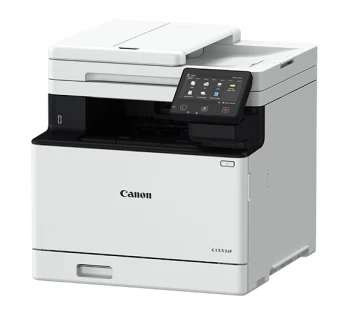Whether you're outfitting a home office, upgrading your business’s print capabilities, or simply want high-quality color prints for personal use, choosing the right color printer can be a surprisingly complex decision. With a wide range of features, functions, and price points, it’s important to know what to look for before making an investment.
Let’s explore the key features, essential functions, and must-have specifications that should be on your radar when shopping for a color printer in 2025.
1. Print Technology: Inkjet vs. Laser
The first major decision you’ll need to make is between inkjet and laser printers. Each has distinct strengths and ideal use cases:
- Inkjet Printers are best suited for vibrant photo prints and color-rich documents. They’re typically more affordable upfront but can have higher long-term running costs due to ink cartridge replacements.
- Laser Printers use toner instead of ink and are ideal for high-volume document printing. Color laser printers tend to be more expensive initially but offer better print speeds and lower cost-per-page in the long run.
Pro Tip: If you print graphics-heavy documents, marketing materials, or photos, go with inkjet. For fast, text-heavy output with occasional color needs, choose laser.
2. Print Quality and Resolution
The resolution of a printer is measured in dots per inch (DPI). A higher DPI generally translates to better print quality.
- Standard quality for color documents is around 600 x 600 DPI.
- Photo-quality printers may go up to 4800 x 1200 DPI or higher.
For professional-looking brochures, presentations, or photo printing, aim for higher DPI. If you only need crisp text and some color highlights, lower DPI is sufficient.
3. Print Speed (Pages Per Minute - PPM)
Speed is a key consideration, especially for office environments.
- Color inkjets typically offer 10-20 pages per minute (ppm).
- Color lasers can reach up to 30-40 ppm or more.
Always check whether the advertised PPM is for black & white or color prints—they often differ. Additionally, look for models that don't sacrifice quality for speed.
4. Connectivity Options
Modern color printers offer multiple ways to connect:
- USB: Ideal for direct connection to a computer.
- Wi-Fi / Wi-Fi Direct: Enables wireless printing from multiple devices.
- Ethernet: Great for networked office environments.
- Mobile Printing: Look for compatibility with AirPrint (Apple), Mopria (Android), and apps like Google Cloud Print or proprietary apps from brands like HP, Canon, or Epson.
Cloud-based printing and app integration are particularly useful for remote or mobile teams.
5. Multifunction Capabilities (All-in-One)
Many color printers are now multifunction or all-in-one devices, offering:
- Printing
- Copying
- Scanning
- Faxing (though less relevant today)
If you often need to scan documents or make copies, an all-in-one model can save space and money. Make sure the scanner has a good resolution (at least 1200 DPI for photo scanning) and that the device includes an automatic document feeder (ADF) for batch scanning and copying.
6. Paper Handling and Capacity
Paper handling features determine how versatile and efficient your printer will be:
- Input tray capacity: Ranges from 100 to 500+ sheets.
- Output tray capacity: Ensures prints don’t scatter.
- Duplex printing: Enables automatic double-sided printing—essential for saving paper.
- Multiple trays: Handy for switching between different paper sizes or types.
- Supported media types: Check compatibility with envelopes, card stock, photo paper, and labels.
Businesses that print in bulk or use specialty media should pay extra attention to this.
7. Running Costs: Ink & Toner Efficiency
The cost per page (CPP) is a critical factor for long-term use. Ink and toner can be a major expense:
- Standard cartridges are cheaper upfront but require frequent replacement.
- High-yield cartridges cost more but last longer and reduce CPP.
- Subscription ink services offer convenience and savings for predictable use.
Research the availability and price of replacement cartridges before purchasing any printer.
8. Duty Cycle and Monthly Volume
Printers are designed for different workloads:
- Monthly duty cycle is the maximum number of pages the printer can handle.
- Recommended monthly volume is the ideal number for long-term performance.
For home use, a printer with a duty cycle of 1000–3000 pages/month is usually sufficient. Offices may require 10,000+.
9. User Interface & Ease of Use
An intuitive interface can make a big difference:
- Touchscreen displays are easier to navigate than button-only controls.
- Preset profiles can simplify complex tasks like duplex scanning or booklet printing.
- Remote monitoring and printer management software (common in enterprise models) help IT teams control usage and troubleshoot issues.
10. Brand Reliability & Support
Stick with reputable brands that offer:
- Strong warranty coverage (1-3 years preferred)
- Access to firmware updates
- Customer support and repair services
- Readily available replacement parts and cartridges
11. Eco-Friendly Features
Sustainability is becoming a top consideration. Look for:
- Energy Star certification
- Automatic duplex printing
- Eco mode or toner-saving features
- Recyclable cartridge programs
Environmentally conscious features not only help the planet—they can save money over time.
12. Security Features (For Office Printers)
In a business setting, security is crucial:
- Secure print release (via PIN or ID card)
- Encrypted connections
- User authentication
- Remote admin tools
These prevent sensitive documents from falling into the wrong hands and help with compliance.
Final Thoughts
The best color printer for you depends on how you plan to use it. For home and occasional use, a compact inkjet with good print quality might suffice. For businesses, a high-capacity color laser printer with advanced connectivity and low cost-per-page will be more suitable.
Before making a purchase, take the time to assess:
- Your typical monthly print volume
- The kind of documents you'll be printing
- How many people will use the printer
- Your budget—both upfront and ongoing
By considering these factors and prioritizing the features outlined above, you'll be well on your way to finding a color printer that meets your needs now and in the future.


